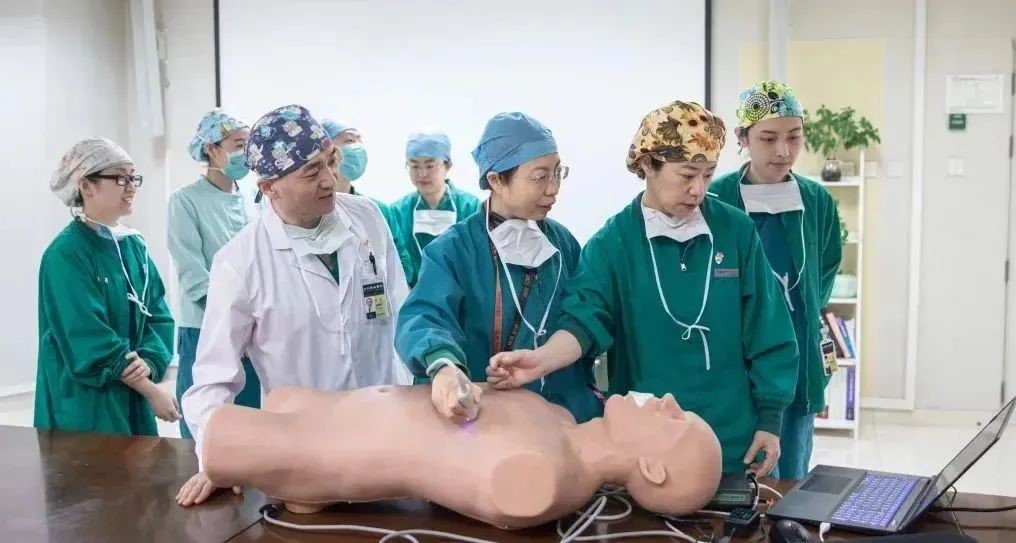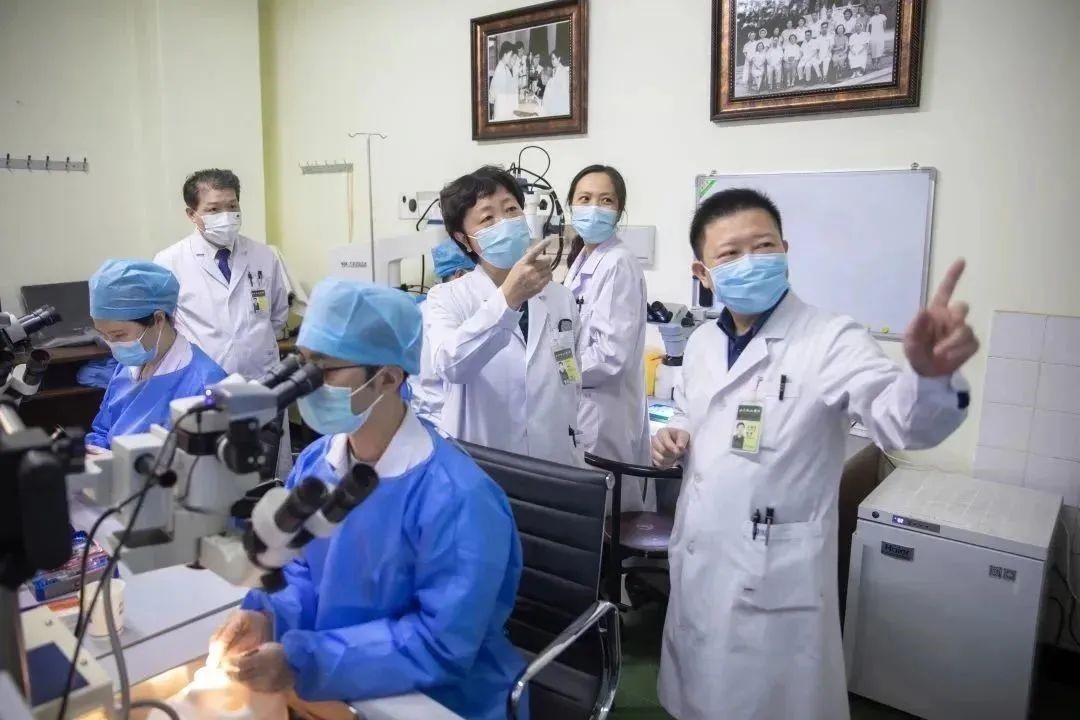Recently, under the coordination of the Department of Education, PUMCH, the Department of Anesthesiology introduced the echocardiography simulator, and the Department of Ophthalmology upgraded the integrated training microscopes and proceeded with faculty training, curriculum design and training system improvement. With the aid of new technologies and new programs, PUMCH keeps enhancing the path of lifelong learning for physicians and medical students.
Equipping Anesthesiologists with the “Third Eye”
PUMCH completed more than 80,000 surgeries in 2022, including surgeries for many patients with rare and intractable diseases and in critical and acute conditions from all over China. Under the dual impact of underlying diseases and surgical trauma, patients’ conditions during the perioperative period often change significantly and rapidly, which makes maintaining intraoperative hemodynamic stability an important challenge for anesthesiologists. Intraoperative transthoracic and transesophageal echocardiography enable real-time accurate assessment of cardiac functions, blood volume and other circulatory factors, which is essential to ensure patients’ perioperative safety. However, echocardiography training needs both tech-savvy trainers and sophisticated equipment, and currently only a dozen physicians in the subspecialty of cardiac anesthesia have mastered the technique.

To expand the clinical application of transthoracic and transesophageal echocardiography, PUMCH introduced the most advanced echocardiography simulator in the world. The Department of Anesthesiology has launched a perioperative echocardiography simulation training course, including a 7-week “all-encompassing” basic training and a 12-week “specialty-focused” training to enable targeted learning for physicians in different posts and with different priorities. After the weekly theoretic teaching, the trainees spend a week practicing with the simulator. The Department of Anesthesiology requires all young and middle-aged anesthesiologists under 45 to attend the training and pass the evaluation, thereby qualifying for intraoperative echocardiography operation. Shen Le, Executive Deputy Director of the Department of Anesthesiology, said, “We hope that the systemic and efficient training can help expand the application of echocardiography in all kinds of surgeries for patients with rare and intractable diseases and in critical and acute conditions and better protect the health and safety of patients perioperatively.”
Hands-on Training for Young Physicians of Ophthalmology
In the ophthalmology Wetlab, trainees were practicing cataract surigical techniques such as capsulorhexis, nucleus dividing and phacoemulsification with the help of the four recently introduced top-notch integrated training microscopes.
Wetlab requires online appointment. During the training, a chief resident or attending physician provides step-by-step demonstrations and tableside instruction, etc. “The new microscopic instruments make the web lab more like the actual operation room, and that is useful for us to improve our skills,” said the trainees in front of the operating table, lavishing praises on the new instruments. The newly integrated training microscope are capable of storing images and videos of a trainee’s surgical procedures. Upon completion of the required training hours, a panel of at least three teachers conducts a rigorous blind evaluation of the students' performance, and the students are graded accordingly. Only those who meet the standards set by the panel are allowed to advance to the next level of training.
The Department of Ophthalmology at PUMCH adopts the “1+3” surgical training model, with “1” denoting a solid theoretical mastery as the foundation, “3” representing the progressive microscopic hands-on training program consists of three levels of increasing complexity. The first level, Drylab training, involves simulated operations using a simulator; the second level, Wetlab training, involves practical exercises on animal eyes; and the third level is live surgical operations on human eyes. Like the driver’s license exam, students need to pass one level before moving on to the next, until they eventually pass all levels and can “hit the road” on their own. The wet lab training sessions enable trainees to learn how to use microscopic instruments and become adept at surgical procedures and processes, laying the foundation for them to improve their performance faster when they operate on patients.

PUMCH, in light of clinical needs, keeps upgrading its equipment, diversifying teaching materials and improving training system. Under its progressive training scheme, trainees first master theoretical knowledge, laying a solid foundation; then they learn via hands-on training and gradually become more sophisticated so that they eventually excel at actuals operations. This is how PUMCH builds an excellent team of high-calibre and professional talents.
Written by Gan Dingzhu, Wang Jingxia, Chen Huan and Xia Di
Photographed by Sun Liang
Edited by Chen Xiao, Gan Dingzhu, Wang Jingxia, and Wang Yao
Translated by Liu Haiyan
